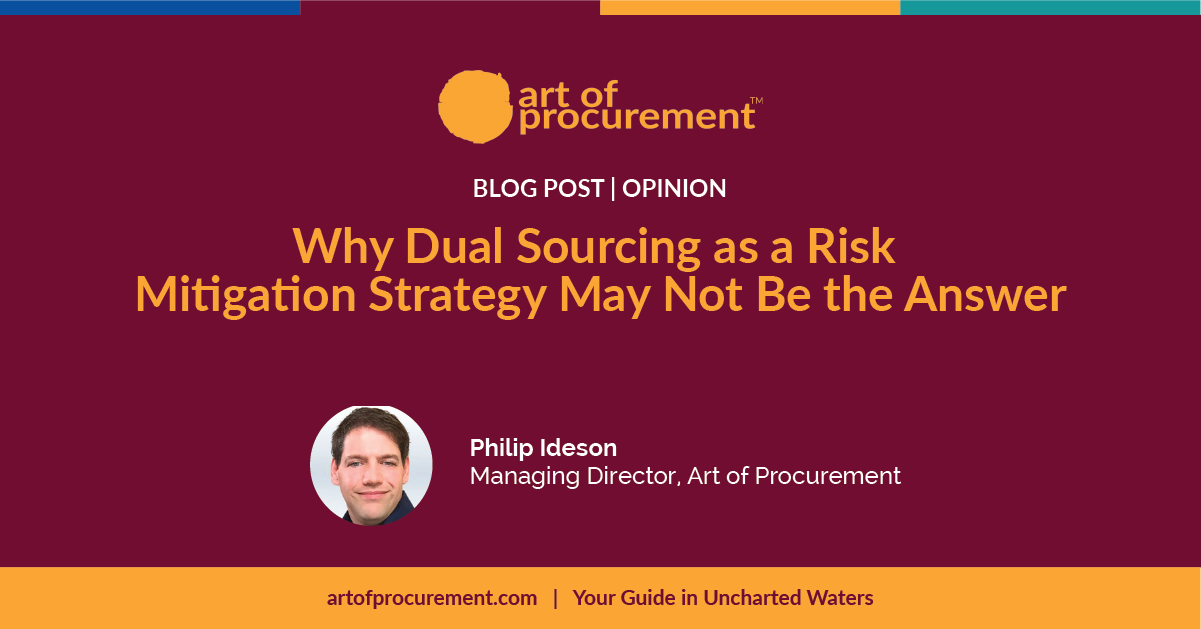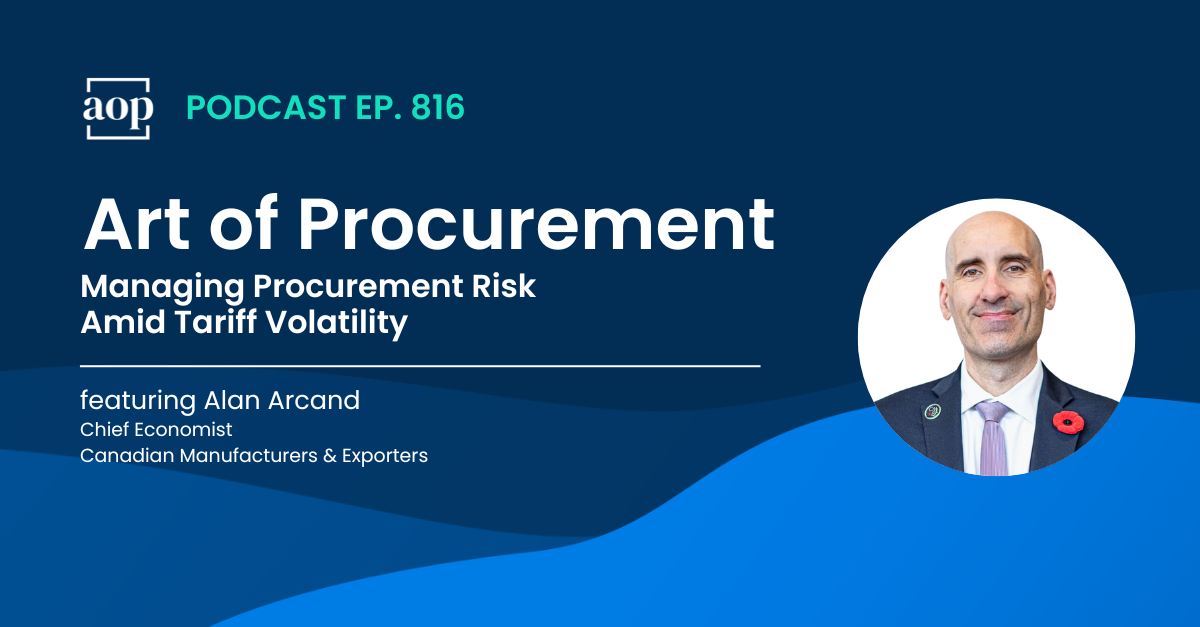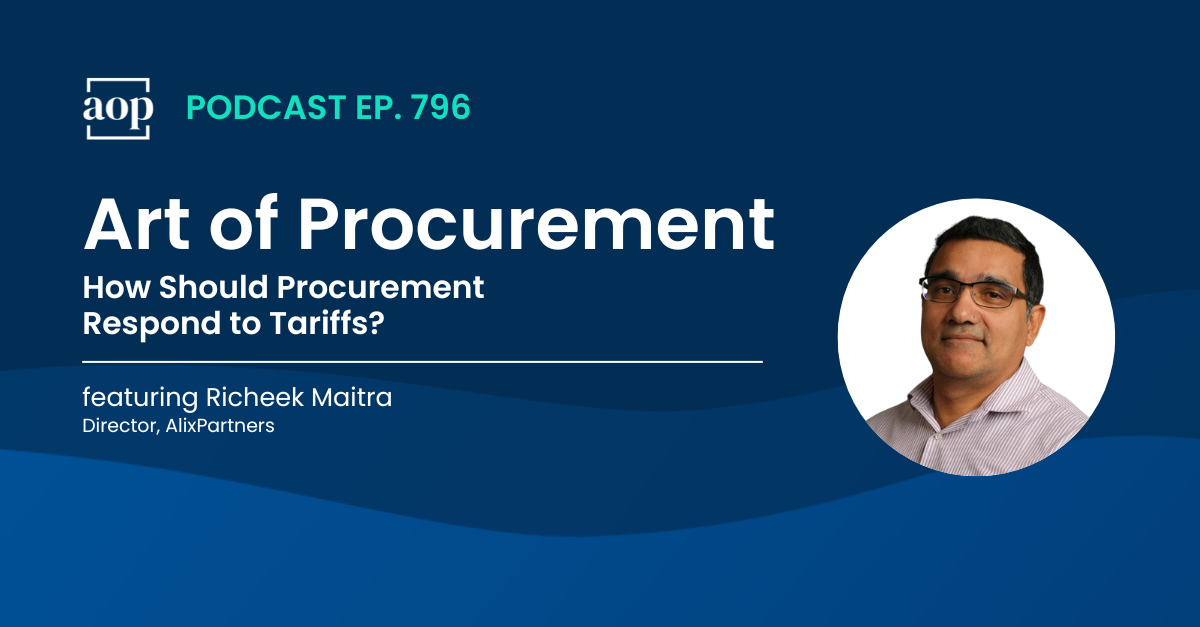2 min read
Why Dual Sourcing as a Risk Mitigation Strategy May Not Be the Answer
Philip Ideson : May 11, 2020

The ‘word on the street’ about how procurement should respond to COVID-19 product and service supply problems is that going forward dual sourcing should be the default approach.
We’re certainly not against dual sourcing as a strategy. In fact, we encourage clients to have optionality in their category strategies.
Before the world rushes to seek alternate sources for all or their critical or strategic contracts and suppliers, procurement has to apply what we know.
For instance, concentration risk comes in many forms. You could work with five suppliers instead of one, but if the disruption is geographical and they are all based in the same region, you haven’t diversified any of your risk. Maybe those 5 suppliers are scattered across the globe but they are all buying materials from the same sources of raw materials. Again, not diversified. Some products and services simply can’t be dual sourced because you are buying a unique spec or the supplier has an advantage or patent.
If you are going to dual source, make sure the advantages are real and substantive enough to outweigh the cost, because (as procurement knows well), dual sourcing is generally more expensive than sole sourcing. You could end up with more supplier relationships to manage, more transactions to process, and a loss of your coveted “customer of choice” status – and have the privilege of paying more for it.
The primary exception to these warnings about ‘automatic’ dual sourcing is highly competitive, commoditized products with multiple suppliers, low switching costs, and similar quality. I’ve personally managed to dual source in these categories, reducing costs by up to 50% over two years while reducing risk at the same time.
So what is a mindful procurement pro to do?
First, determine which spend categories require you to pursue a risk mitigation strategy. These are the products and services you buy that are critical to business operations.
Next, gather this information about those critical products and services:
-
- Monopoly or many suppliers?
- Short or long lead time?
- Low or high switching costs?
- Product or service?
- How competitive is your current pricing?
- Is fulfillment or service provision geographically dependent?
- Is the industry heavily regulated?
How you answer these questions will determine if dual-sourcing is even a viable strategy, and if so, whether it is an immediate strategy, or requires a long-term approach.
For those that you cannot easily bring on an alternative source of supply, evaluate the financial health of the supplier and the collaborative health (and value) of your relationship. This helps you prioritize the development of your mitigation strategies (high risk product and service + high supplier risk = a big red flag).
Use additional due diligence techniques such as supply chain mapping (intuitive for products but just as important for services), and Failure Mode and Effects Analysis (FMEA).
Finally – before you start developing intricate dual sourcing strategies for your highest risk products and services, we always recommend talking to your incumbent suppliers first (assuming they are financially stable). What can they do to help reduce your concentration risk? If you don’t address that with your strategy, you may just be switching one kind of risk (single source) for another (such as geographic concentration risk).




